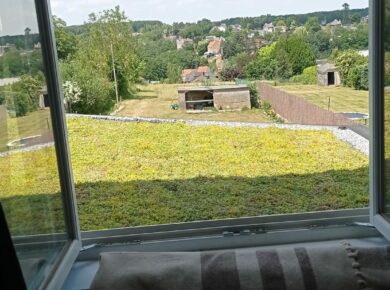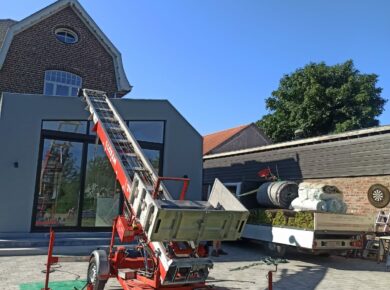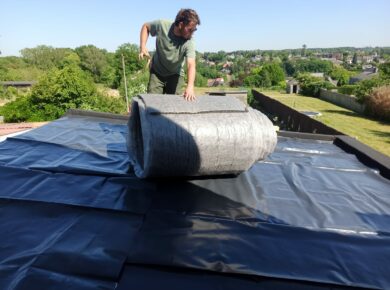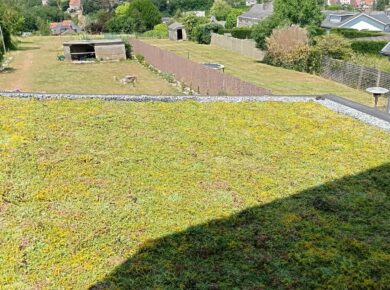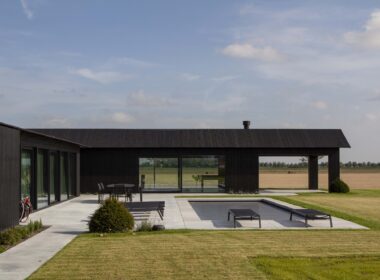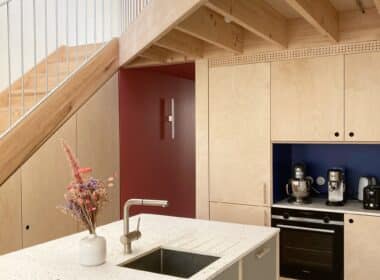This type of request is frequent, and we are contacted either by architects or directly by homeowners. The new Regional Urban Planning Regulations (RRU) of the Brussels Region imposes vegetation requirements.
In this case, we worked in collaboration with the house’s architect, who was able to provide precise information in terms of the load-bearing capacity of the roof, which also has a slight 8° slope. As the load-bearing capacity was very low, we opted to install a carpet of nine varieties of sedums, which will provide flowers in a range of colours and therefore a highly aesthetic view for the house’s inhabitants. The project could be implemented quickly as the insulation and waterproofing had only recently been installed.
We installed a drainage and anti-root layer, a 40 mm layer of mineral wool allowing 34 L/m2 retention, then the mixed sedum carpet; the saturated weight of the system was 55 kg/m2 and its thickness around 7 cm.
It will be easy to water the sedums in hot weather, as the roof is accessible from the first-floor bedroom.
We also proposed a maintenance contract, as one or two visits per year are important to check the evolution of vegetation, control weeds and check the general condition of the roof. The vegetation solutions we propose are adapted to each project and depend on the load-bearing capacity of the house, the slope of the roof, the expectations of the owners and the budget allocated to the project. The durability of the installed green roofs is our priority, which is why we systematically recommend a maximum supported substrate quantity and a greater diversity of native plants adapted to roofs. We also create edible roofs for private individuals or for market garden production, as at URBAN FARM on the roof of Delhaize Boondael in Ixelles.

